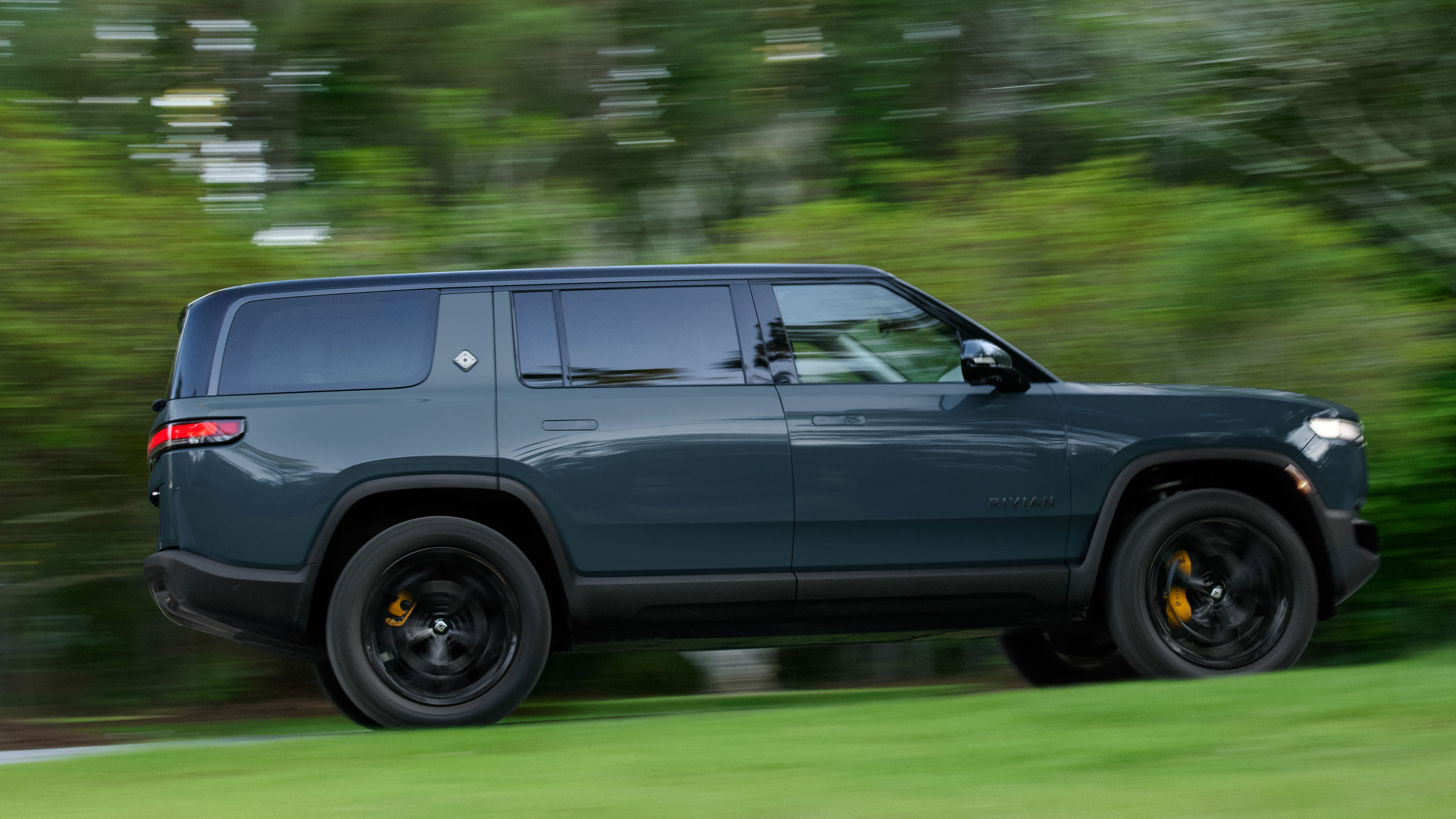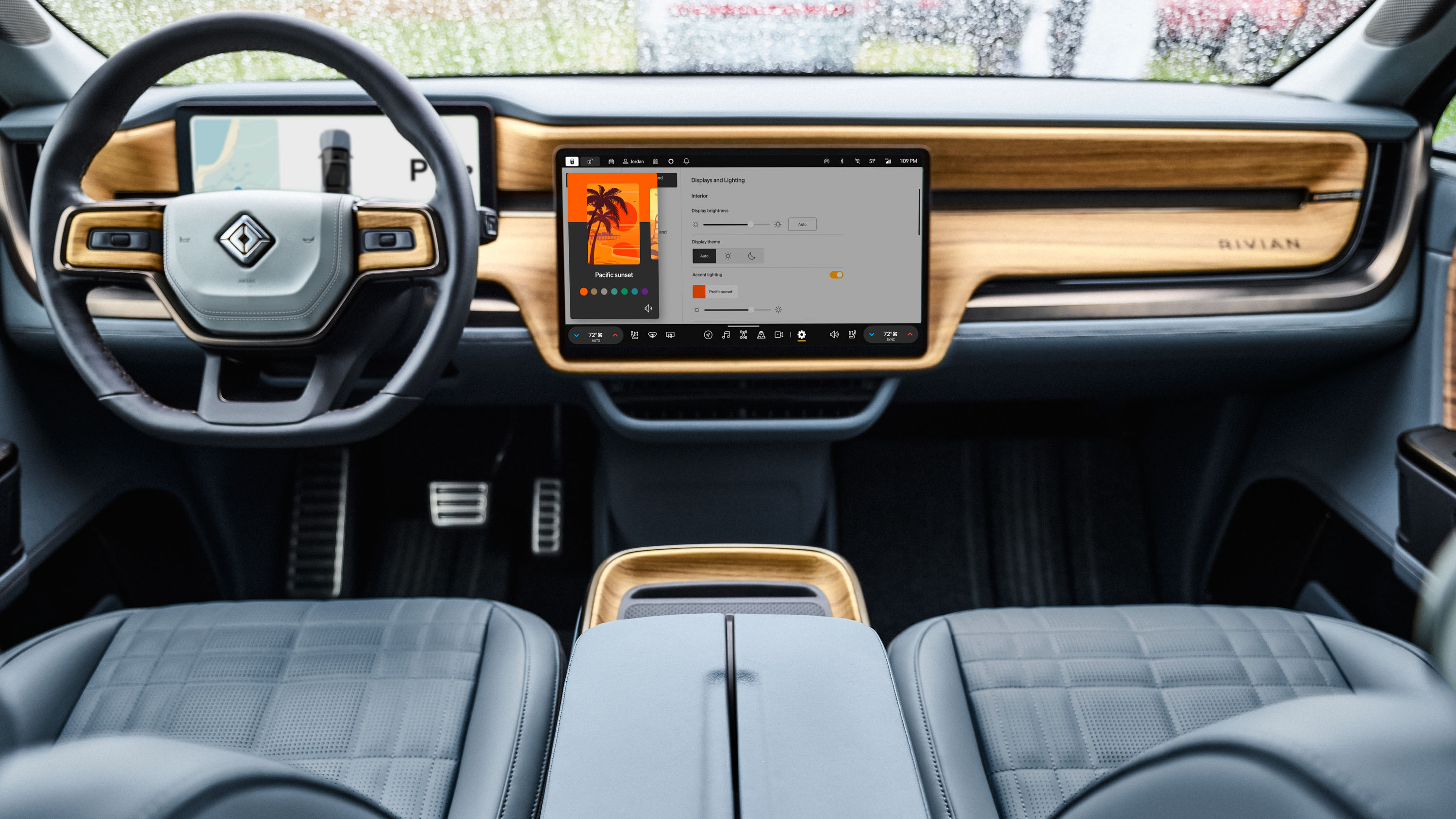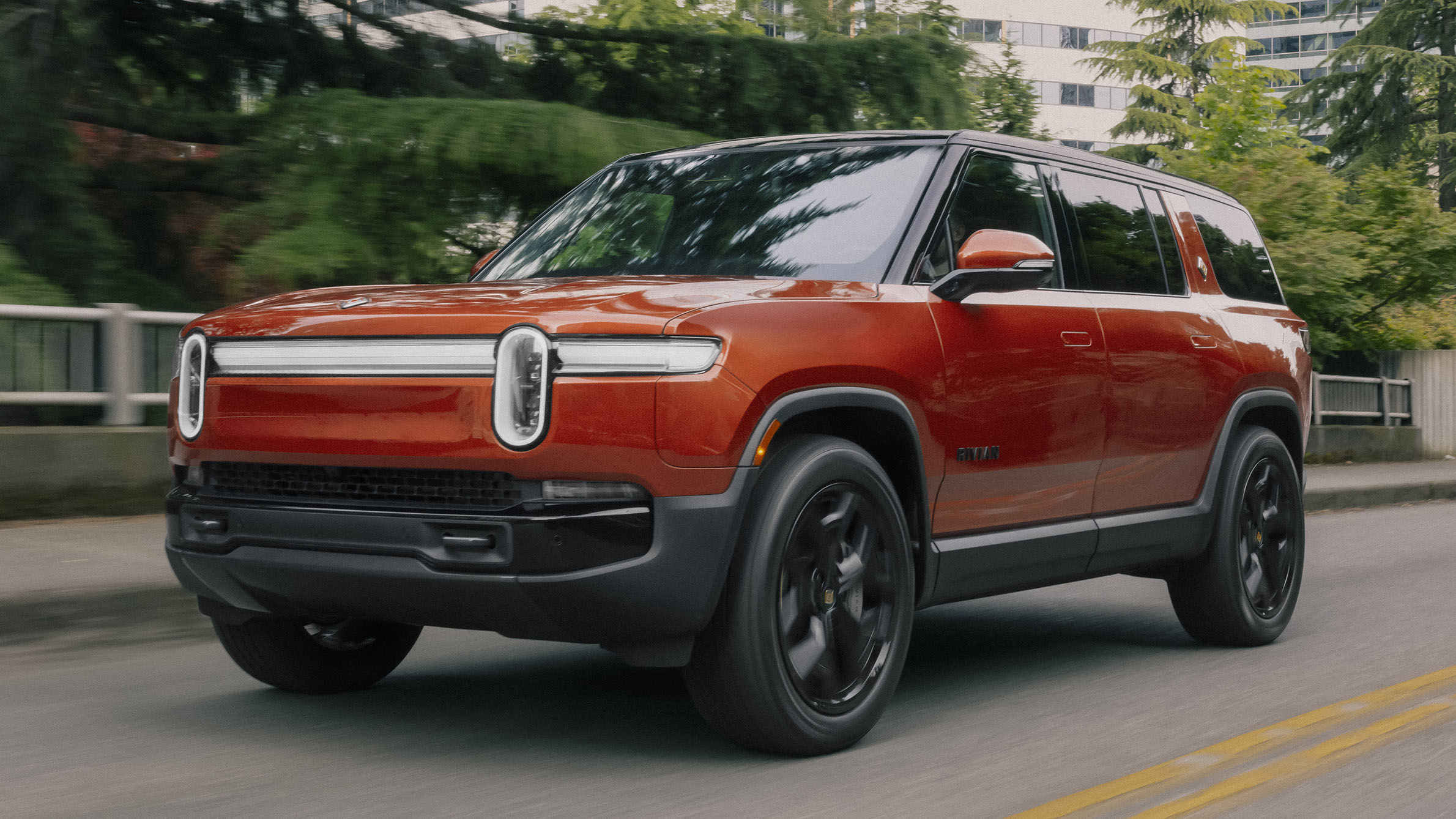
Rivian R1S (US) review
Interior
What is it like on the inside?
Rivian’s enthusiasm for the R1S is evident in the care taken to make the interior the perfect space for its particular style of customer: it’s both tech-forward and outdoorsy, with sharp looks and a cosy, functional atmosphere.
Apart from the wheel column, the Rivian’s cabin is bereft of physical inputs, in keeping with the streamlined interior fashion EV renegades seem to love so much. Between the 15.6in touchscreen and the digital driver display, the environment is meant to conform to the user, memorizing preferences through custom profiles and displaying pertinent information. As nifty as it sounds, its execution takes some getting used to.
Being free of the burden of legacy means Rivian has a clean sheet for designing the interior of its dreams, though it also means reinventing the wheel when it comes to minor details that longstanding automakers have already sorted out.
It’s cool that the R1S can memorize a driver’s mirror, seat and air conditioning preferences, but it’s less so when these need to be adjusted on the fly. Where a tiny plastic toggle would’ve sufficed, drivers now have to summon an on-screen menu and use the wheel-mounted inputs to make the tweaks, or pull up the HVAC menu to simply redirect air vent flow.
Minor things for sure but they add up, and each physical function eschewed means adding another input to an increasingly complicated digital interface. Sometimes an air vent can just be an air vent.
Sheesh. Anything you liked?
Oh, for sure. While the execution may not be perfect, the intention is to make the inside of the R1S a pleasant place to spend your time and in that regard, it’s very successful. Annoyances aside, there’s a level of detail here that’s hard not to be charmed by.
Accents and patterns can be found in the unlikeliest of places and even the UI has been scrutinized to display the most satisfying and communicative fonts, playful graphics and fun animations befitting the attitude of the vehicle.
The cabin itself is spacious and fits seven with ease, though the third row might be a bit of a squeeze. Still, the first and second rows are all adjustable and have plenty of room to do so. Passengers can enjoy the roomy cabin with 48.6 cu ft (1,376 liters) of open air remaining for cargo. Lay it all down and there's 105.8 cu ft (near enough 3,000 liters) for stuff, or even just to use as a place to sleep while camping. Don’t forget the 9.9 cu ft (280-liter) frunk, either.
Let’s talk about all that technology.
We’ll continue our screed of the UI. In fairness, there’s plenty to like here, but there is indeed a lot to take in. The UI is powered by Epic’s Unreal Engine, something gamers will recognize as the prolific software behind a multitude of games across a number of platforms. Here, it gives the UI a stylish, functional source to do, well, everything since there are no buttons. From navigation to entertainment, the interface is the go-to, with the driver display sharing some of the duties.
For some functions, the dashboard tablet can multitask, but not for others. Tabs and slide-out pages allow for a boggling amount of preferences to tweak, so it’s helpful that the driver display is on hand to deliver an increased sense of situational awareness. Along with speed data and range, the driver display is mostly dominated with a real-time representation of everything the car’s cameras and radars “see”. It’s surprisingly accurate, displaying the cars in front and back of you, their position in the lane, if they’re bus-sized or not, and even representing pedestrians and cyclists accurately.
All of which is thanks to the Nvidia-powered autonomous system in play. On highway roads, the advanced driver aid can be switched on, acting as a superior adaptive cruise control system. It’s hands-on, so don’t mistake it for a BlueCruise-level system, and as such the lane-keeping is a bit ping-pongy, though the advanced sensors keep a sharp eye out for upcoming drivers for its automatic lane change function, aborting the function if it predicts that someone else is about to fill the gap before you do.
There are a number of integrated entertainment options like Spotify, Tidal and a robust tie-in with Apple Music. You can always stream from your phone via bluetooth if you like, though don’t count on using Apple CarPlay or Android Auto, they’re not coming anytime soon.
Why not? According to Rivian’s chief software officer Wassym Bensaid, it would be “a solution of laziness for us". He went on to tell Top Gear that what he means is to integrate all the things that CarPlay brings would mean “abandon[ing] this entire experience that we’re proposing". In short, Rivian is happy to have Apple as a partner, they just don’t want them dominating the entire screen.
What you can do is use Google Cast to stream videos and music from a number of apps like Disney+, so long as you’re not driving, of course.
Featured

Trending this week
- Car Review
BMW iX3






